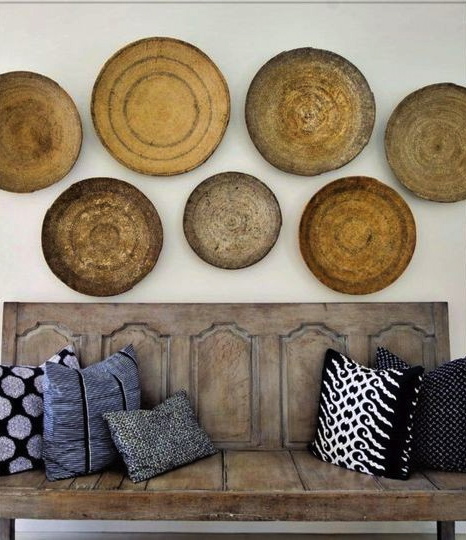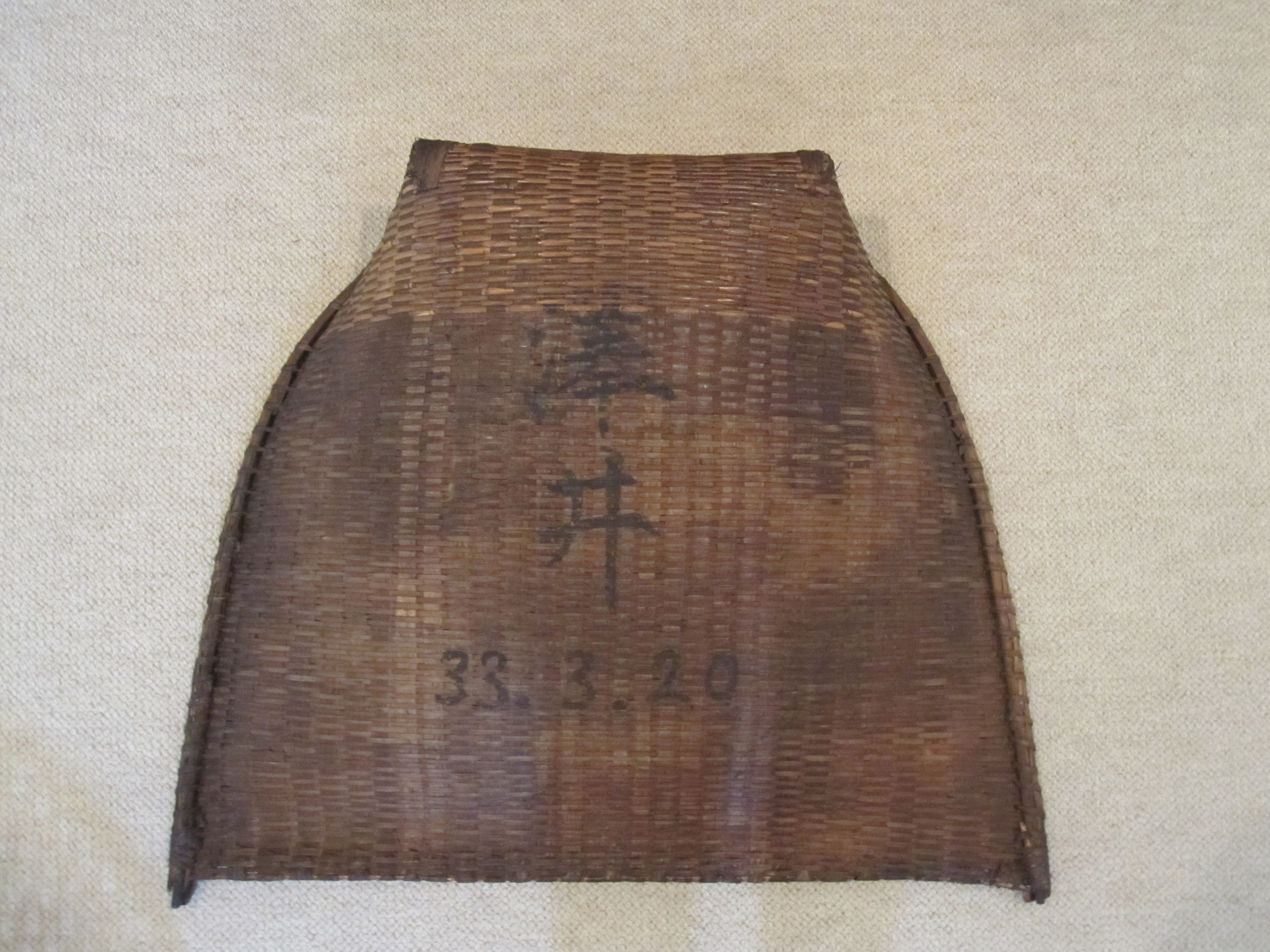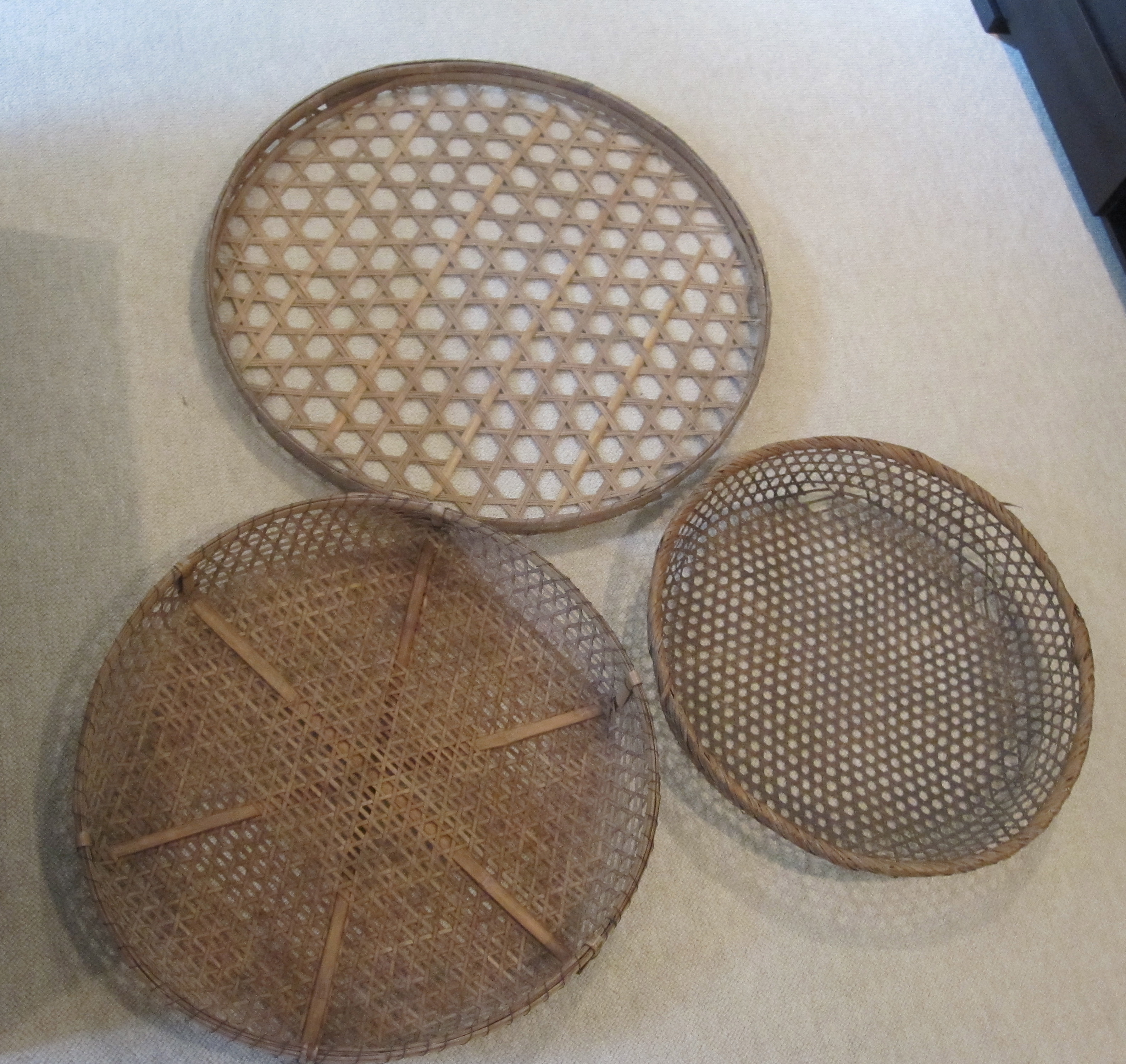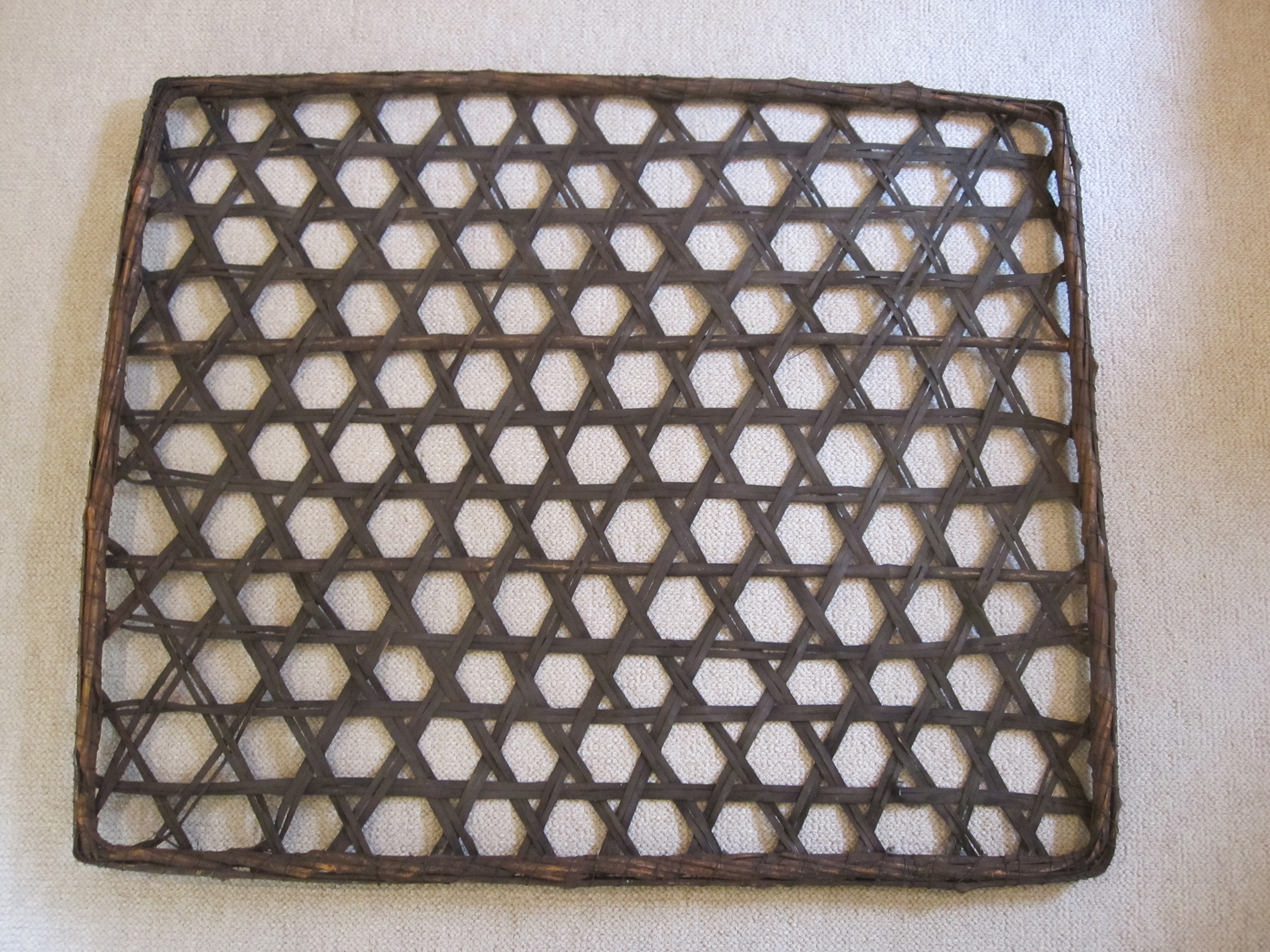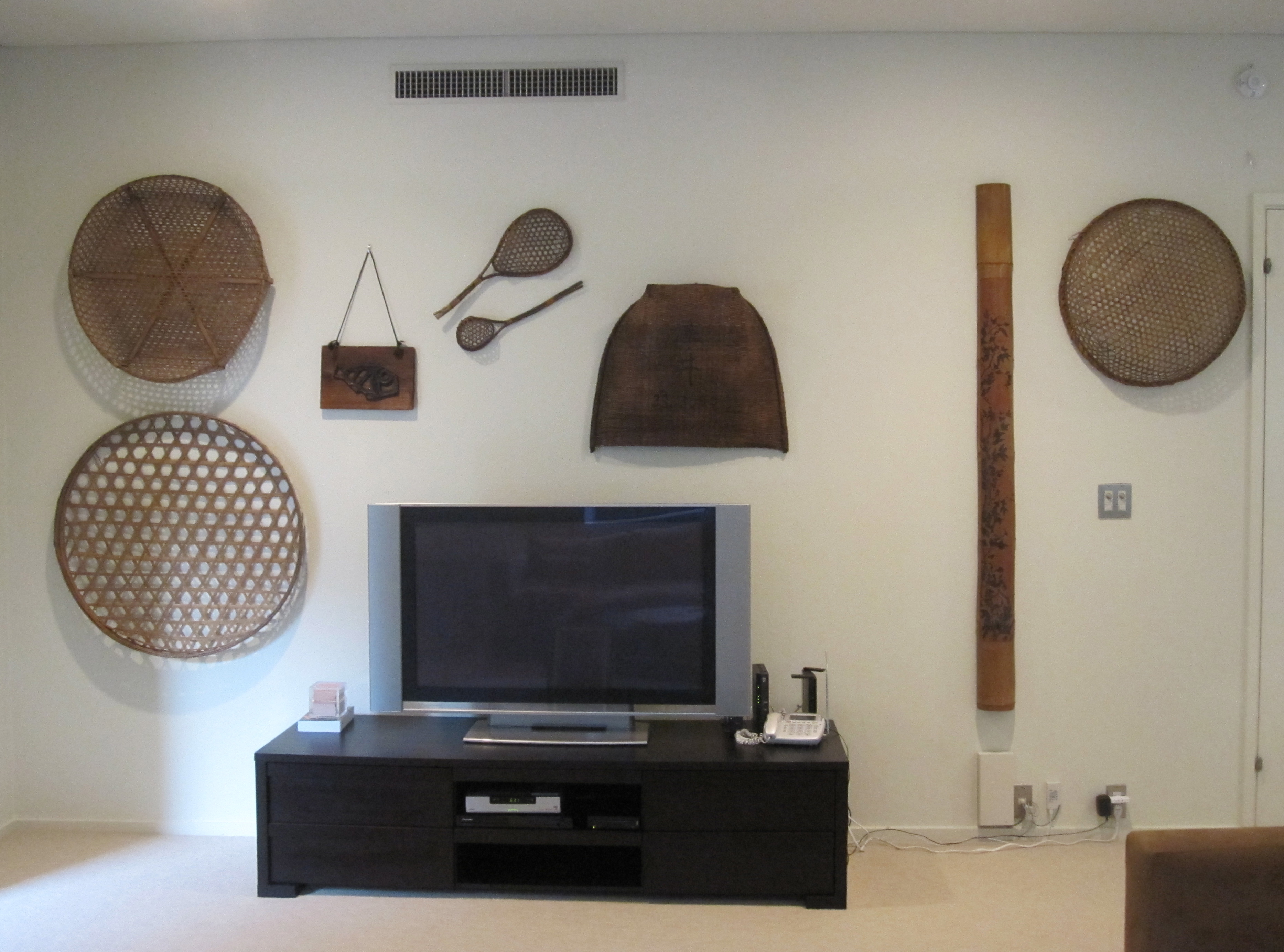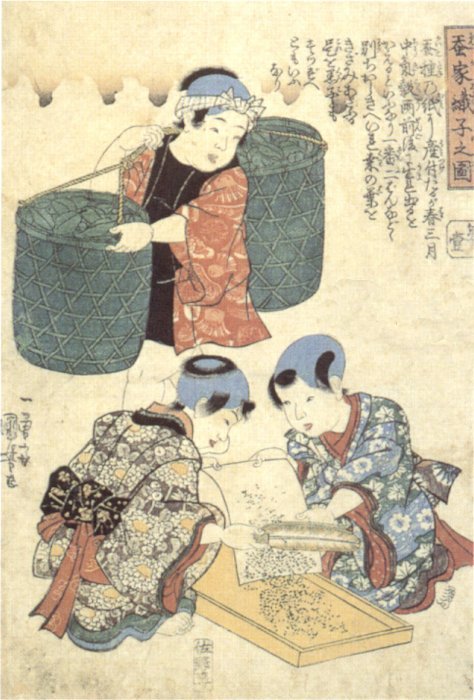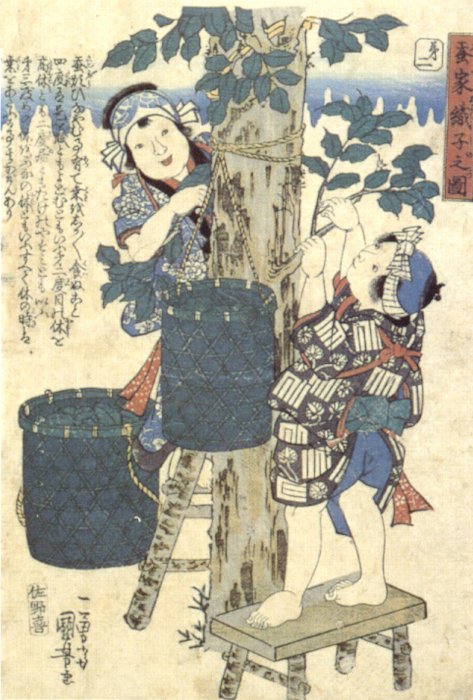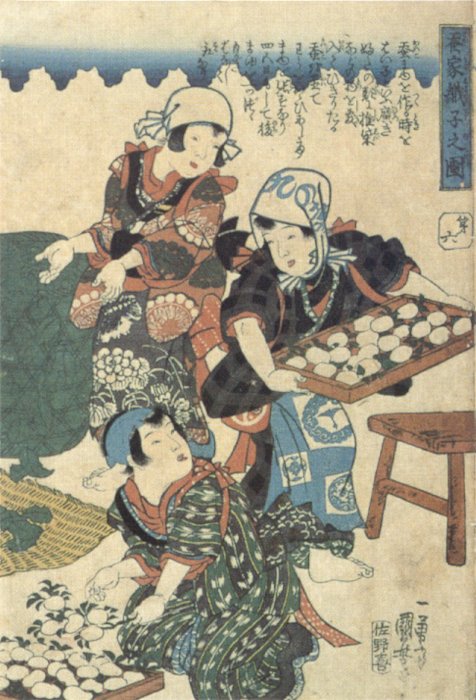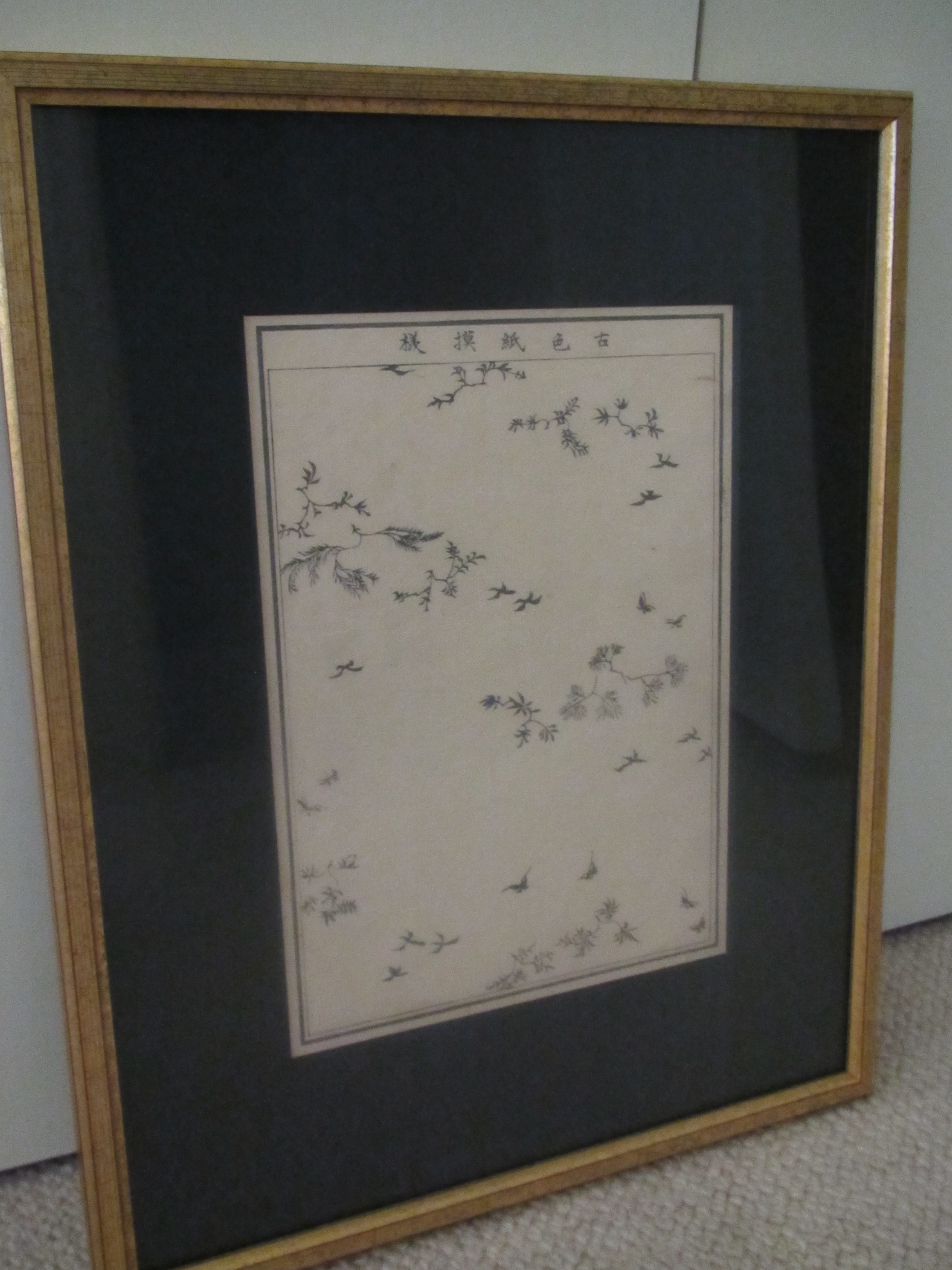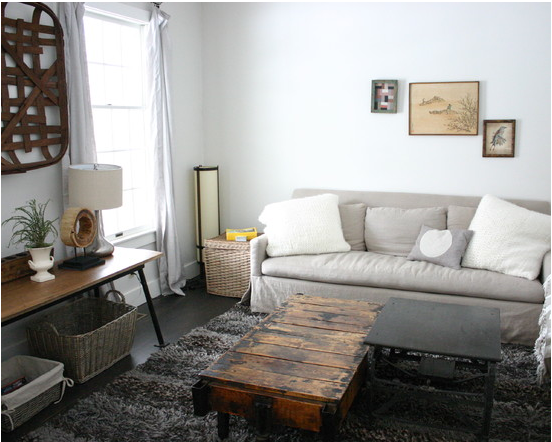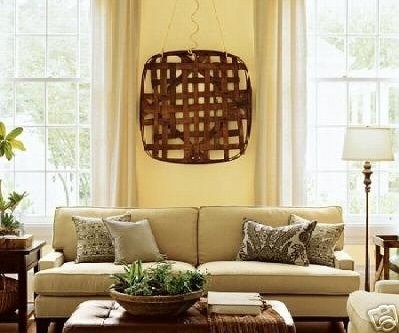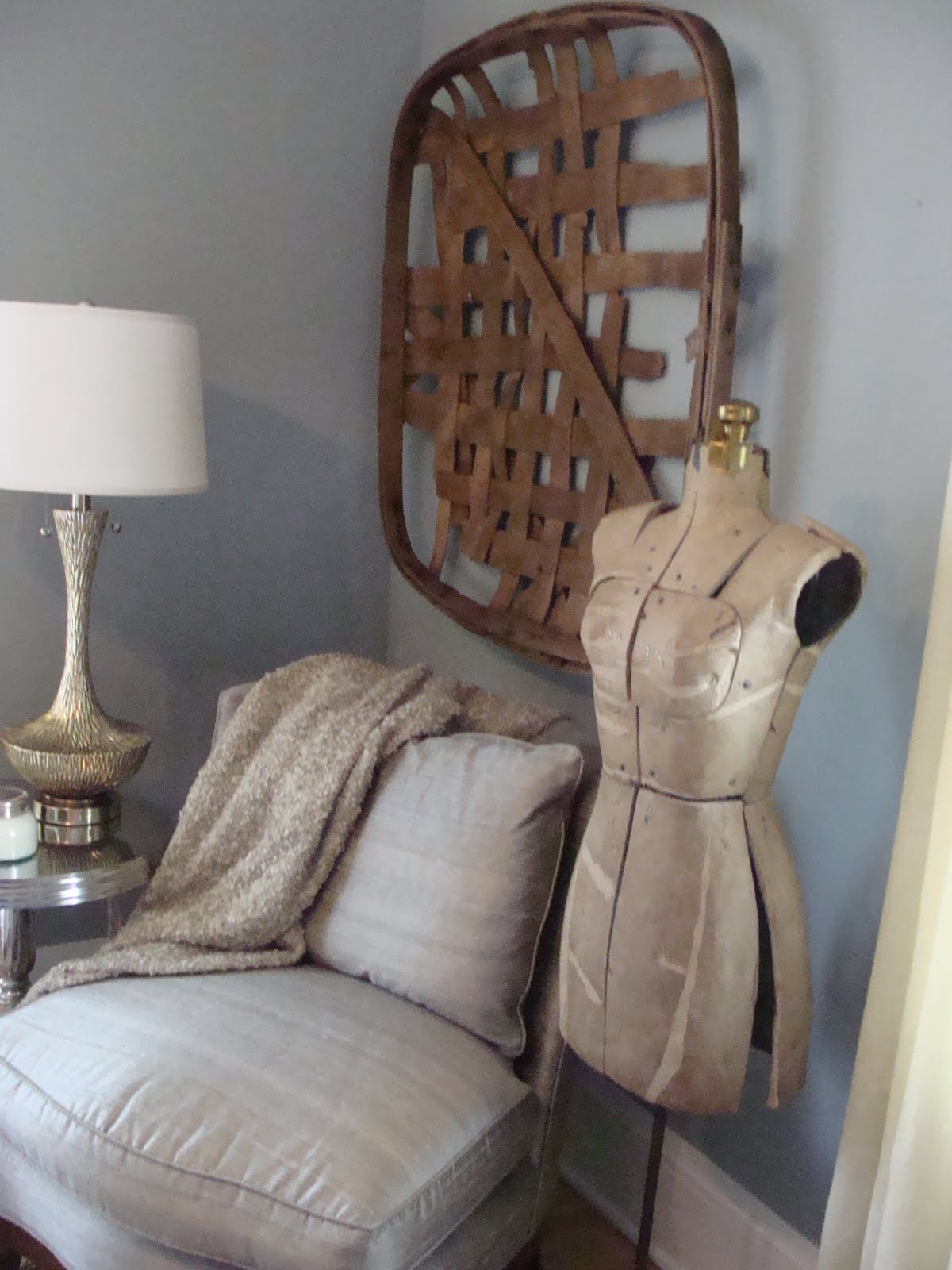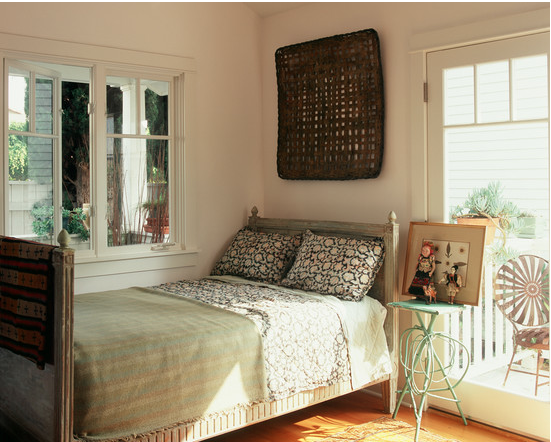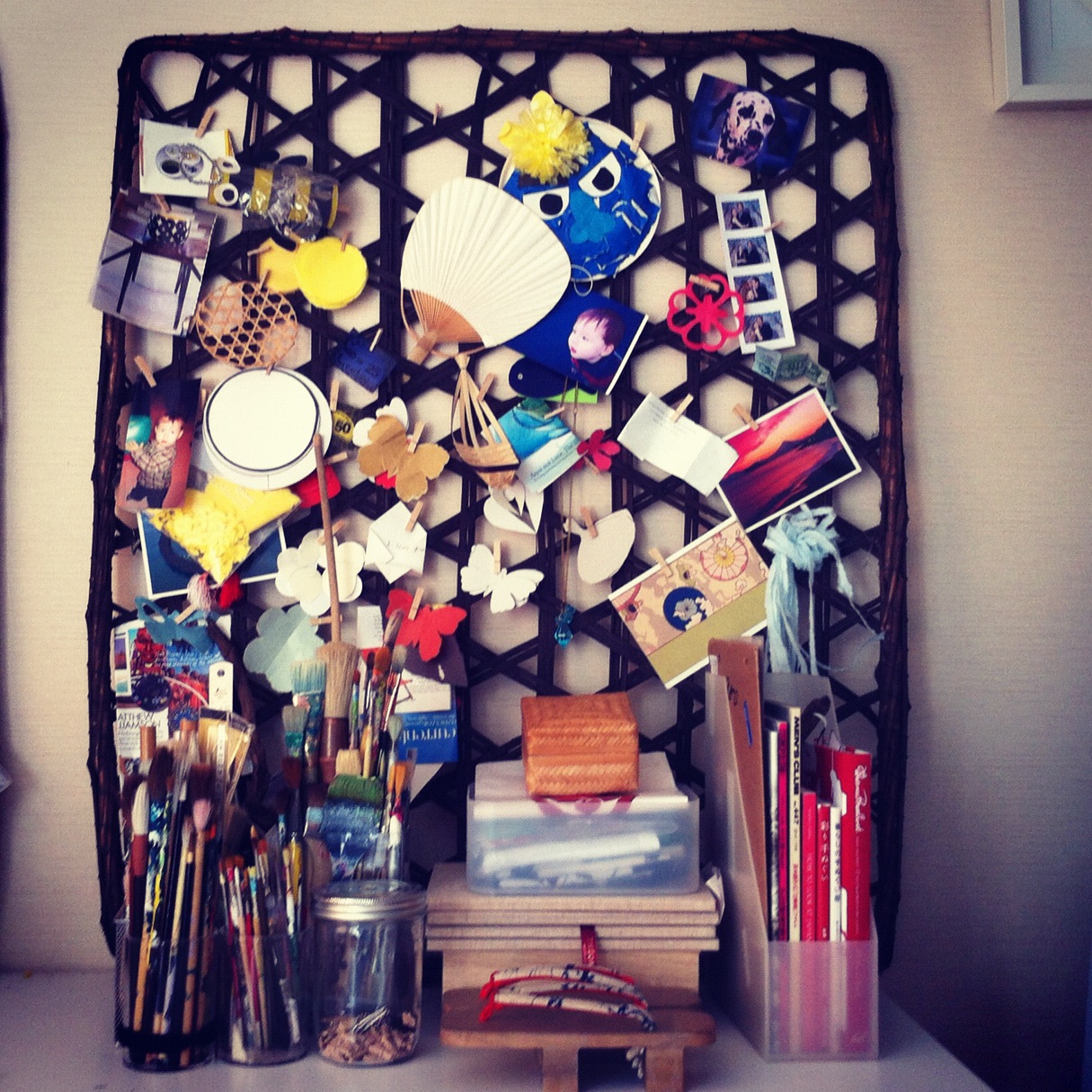More common modern styling tends to position a group of like baskets in a pattern, much like this set of African winnowing baskets, which are used to separate the grain from the chaff.
West Elm in particular has helped to make this look popular.
Part of the charm of baskets as wall art is that they are lightweight and often inexpensive, while covering large areas. Faced with a massive expanse of white in her new apartment and a desire to mitigate the dominance of the television, L asked me to help her solve her dilemma quickly and easily, as she is only in Tokyo on a two-year contract. Using vintage baskets was the perfect solution as they are readily available here, have loads of charm and will not damage the TV or more importantly, the people, in the event of an earthquake.
We had been collecting Japanese baskets for a few months, including this beautiful old winnowing basket dated either 1933, or much more likely Showa 33 (1958) on the back, which we were planning to highlight.
We had also collected some assorted round baskets including a typical silk worm tray…
…and a large rectangular one too, all dark and aged bamboo.
I am often asked exactly how these baskets were used. This photo dates to 1904 and in it you can see women in traditional dress feeding mulberry leaves to the silkworms growing on the trays. Stacks and stacks of them!
We also had some small scoopers sourced at the Kawagoe shrine sale…
and a wooden and metal fish sign…
…as well as a beautifully carved and painted bamboo pole.
This is as far as we got before summer intervened. We saved a column of space to the left of the bamboo pole for a vertical row of framed prints.
Wouldn’t it be funny to be thematic and hang an ukiyo-e series like this, Kuniyoshi’s Weavers’ Children in the Silkworm House, which depicts the entire process of making silk from start to finish?
More likely to be this series of 19th century Japanese design plates we just had framed, although perhaps a little color might be nice, so on the other hand we might just save this group for the dining room.
The large rectangular tray got its own wall on the side.
Japanese silkworm trays aren’t commonly featured in Western interiors, in fact the only time I have seen one is in this photo below from an older Metropolitan Home that I featured in a previous post.
But the rectangular ones do remind me of another basket that has become very trendy to hang, in addition to the round African style winnowers above – the American tobacco basket. I feel like I had started seeing them in interiors regularly in the last two years, and now I feel I can’t turn around without noticing one hanging in living rooms with modern counterpoints like this one…
…and this one.
With neutrals…
… and pretty brights in a sunroom – you can see it peeking out of the left corner.
Even a recent post on Cote de Texas, on a completely different topic, managed to have a photo of an unexpected one in a rustic-luxe Mississippi kitchen.
The large size is quite commanding in an entryway.
Single large baskets also look great over beds in bedrooms and have the same advantage there as they do in Tokyo – lightweight if they fall down (although I have read that tobacco baskets are quite heavy).
I love this vignette with the vintage dress form, another favorite that I find in the markets here. Hmm, might need to do a post on those soon.
And I stumbled across these two photos on Houzz from Katarina Tana Design featuring baskets by artist Jonathan Kline.
They make me wonder what my friend, artist Lisa George of Paper Glue Bamboo might do with some of the silk worm baskets we have been collecting for her.
And speaking of that, take a look at the ingenious way she does use one of her silkworm trays! Funkiest inspiration board ever!
And also sent in by friends, this photo of a round silkworm basket in the window of a shop out in the Hamptons selling for something like $250. Crazy!! If you are looking for any, just let me know by email. I have them all the time for a tiny fraction of the cost!
Related Posts:
Kawagoe Shrine Sale Never Disappoints
Artist Spotlight…Lisa George and the Modern Art of Ikkanbari at PaperGlueBamboo


